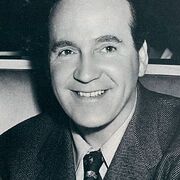Rudolph Maté (1898–1968)
Author of The 300 Spartans [1962 film]
About the Author
Image credit: wikimedia.org
Works by Rudolph Maté
The Man with the Golden Arm / D.O.A. / David Copperfield (Triple Feature Video) — Director — 2 copies
The Mystery Collection 10 Movie Pack — Director — 2 copies
Second chance — Director — 2 copies
Streets of Fear : 20 Movie Collection [4 Discs] — Director — 2 copies
Universal Classics: 3 DVDs — Director — 1 copy
Mystery Classics: Fog Island / Green Eyes / The Green Glove / International Crime (2005) — Director — 1 copy
Quando i mondi si scontrano 1 copy
Associated Works
Film Noir Classics (Detour / D.O.A. / He Walked By Night / Impact) — Director — 1 copy
Tagged
Common Knowledge
- Birthdate
- 1898-01-21
- Date of death
- 1968-10-27
- Gender
- male
- Nationality
- Austro-Hungarian Empire (birth)
- Country (for map)
- USA
- Occupations
- film director
cinematographer
film producer
Members
Reviews
You May Also Like
Associated Authors
Statistics
- Works
- 31
- Also by
- 8
- Members
- 343
- Popularity
- #69,543
- Rating
- 3.7
- Reviews
- 11
- ISBNs
- 15












